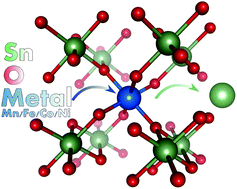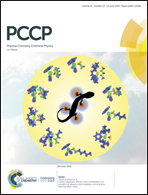Fundamental crystal field excitations in magnetic semiconductor SnO2: Mn, Fe, Co, Ni†
Abstract
Directly measuring elementary electronic excitations in dopant 3d metals is essential to understanding how they function as part of their host material. Through calculated crystal field splittings of the 3d electron band it is shown how transition metals Mn, Fe, Co, and Ni are incorporated into SnO2. The crystal field splittings are compared to resonant inelastic X-ray scattering (RIXS) experiments, which measure precisely these elementary dd excitations. The origin of spectral features can be determined and identified via this comparison, leading to an increased understanding of how such dopant metals situate themselves in, and modify the host's electronic and magnetic properties; and also how each element differs when incorporated into other semiconducting materials. We found that oxygen vacancy formation must not occur at nearest neighbour sites to metal atoms, but instead must reside at least two coordination spheres beyond. The coordination of the dopants within the host can then be explicitly related to the d-electron configurations and energies. This approach facilitates an understanding of the essential link between local crystal coordination and electronic/magnetic properties.



 Please wait while we load your content...
Please wait while we load your content...